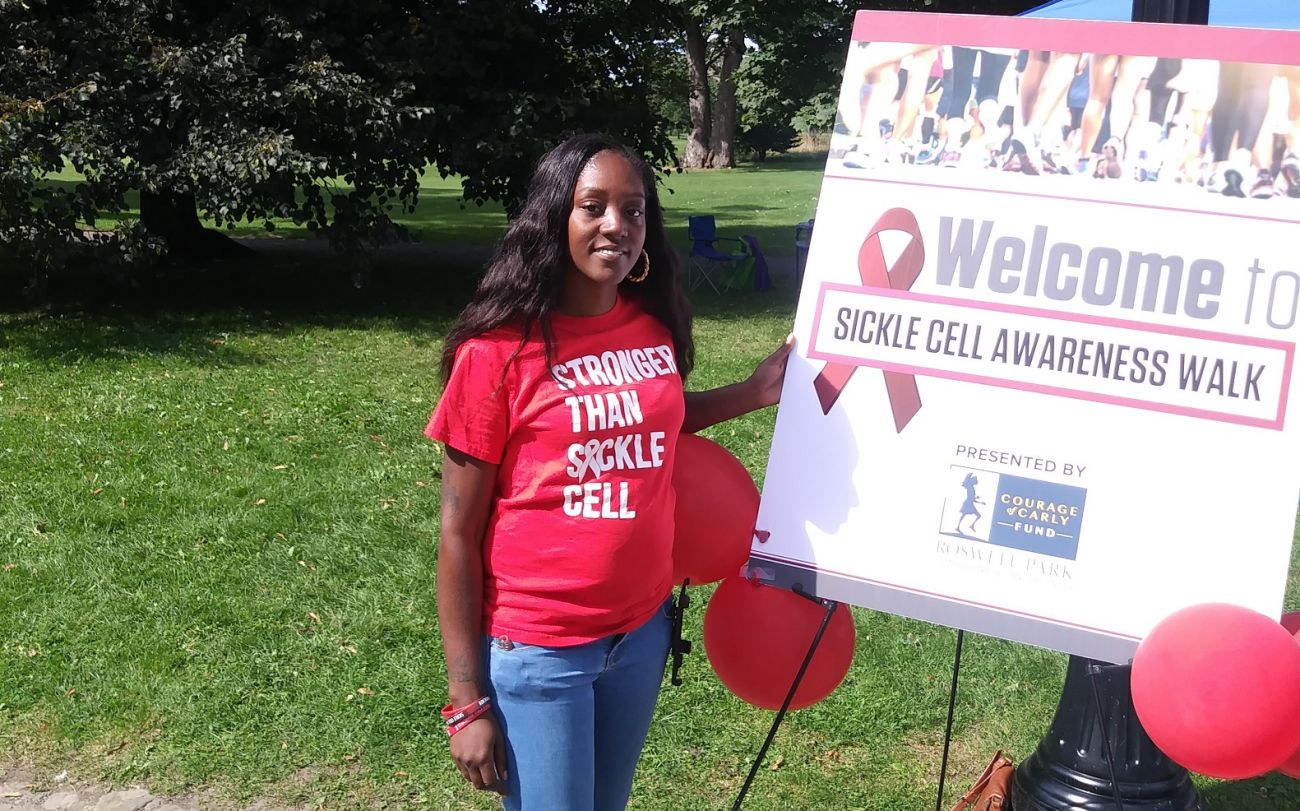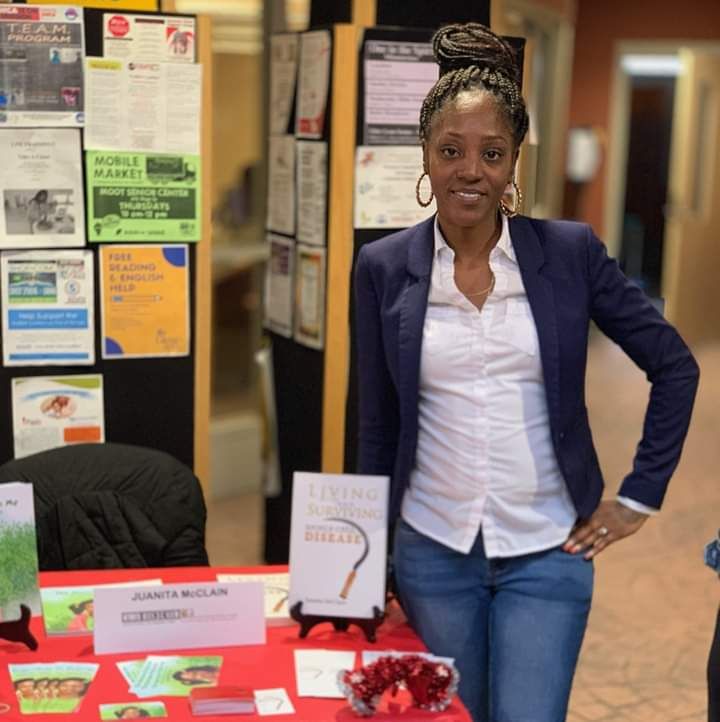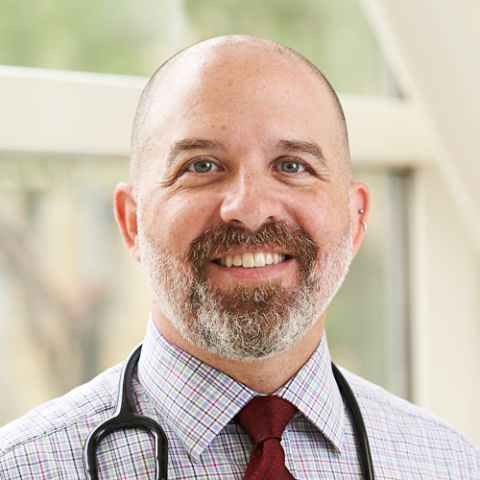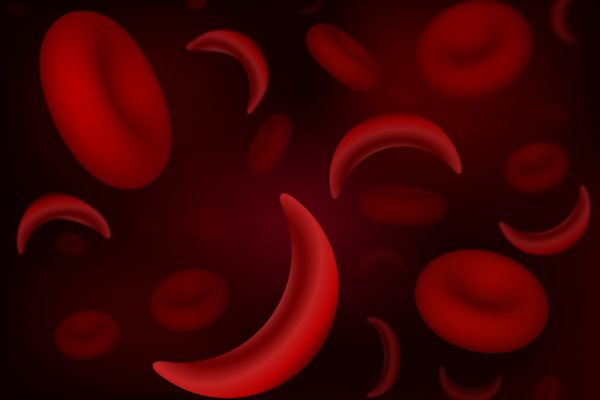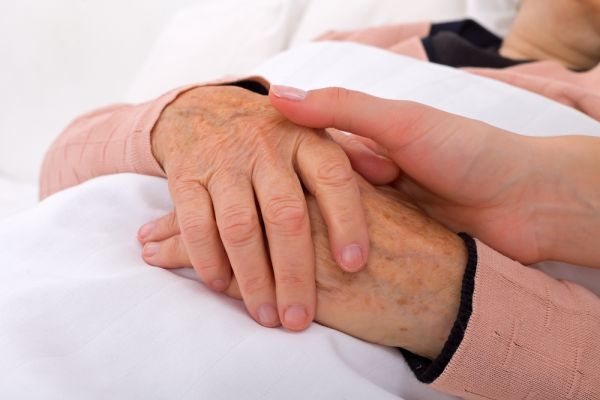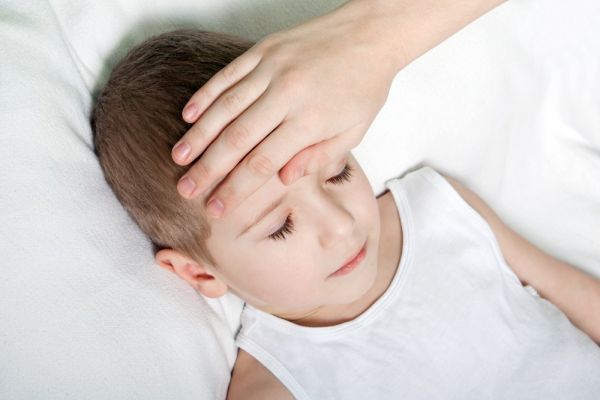Juanita McClain has battled sickle cell disease her entire life.
She’s coped with multiple surgeries, including having her gallbladder removed at age 11, and has lost track of the number of times she’s been hospitalized with pneumonia. Still, despite the hardships, she advocates tirelessly for others with sickle cell disease, encouraging them to seek better health and find the support they need. Juanita is a sickle cell warrior.
In addition to being a busy mom to two boys, Ronald,13, and Aaden,5, and a graduate student (just one semester away from completing her Master’s degree), Juanita runs a support group, chairs awareness events and has authored three books to educate and inspire others with sickle cell disease. One book is an autobiography of her life and two are for children who may be sharing the same experiences she had.
“Juanita is a remarkable woman,” says Steven Ambrusko, MD, Director of the Sickle Cell & Hemoglobinopathy Center of Western New York, and a pediatric hematologist/oncologist with a clinical focus on sickle cell disease at the Roswell Park Oishei Children’s Cancer and Blood Disorders Program. “Despite enduring sickle cell disease, Juanita has a vibrant family life and is an active advocate for sickle cell disease awareness in the community as well as among sickle cell disease patients and adults. She’s a remarkable, inspiring leader.”
We are here to help
Roswell Park Oishei Children’s Cancer and Blood Disorders Program specializes in treating children with sickle cell disease.
What is Sickle Cell Disease?
Sickle cell disease is one of the most common hereditary blood disorders in the world. It occurs in people who inherit faulty hemoglobin genes that causes their red blood cells to form abnormally. Instead of round and flexible red blood cells, the cells are rigid, sticky and shaped like a banana or sickle. Early signs and symptoms include swelling of the hands and feet, fatigue and jaundice. People with sickle cell disease are prone to painful “crises,” anemia, infection, stroke and acute chest syndrome. Sickle cell disease occurs most commonly in people of African descent, but it also can be seen in Middle Eastern, South Asian/Indian, Latino, Italian and other ethnic groups. In the United States and many other countries, all newborn babies are screened for the disease at birth.
Growing up with sickle cell disease was challenging. “I lived in Children’s Hospital a lot,” recalls Juanita of her childhood. “There was so much I couldn’t do, like join my friends swimming or cheerleading or many other activities.” Juanita remembers feeling discouraged during her teen and young adult years. But at age 25, inspired by a speaker at her church, she became determined to make a change for herself and others.
Now age 34, she’s a member of the Sickle Cell Community of Buffalo and WNY, and meets twice monthly with doctors and patient advocates to plan events, such as the recent Sickle Cell Awareness Walk, held last month in Delaware Park. The 2019 event drew over 100 people and brought resources to the community. Throughout the year, Juanita offers advice to individuals and helps facilitate a support group that meets at Bennet High School. She’s also reaching people with her three books, written to help others with sickle cell disease feel supported and educated about how they can improve their health.
“I take it one day at a time, stay positive, and have a dream to go forward,” says Juanita. “I definitely have a strong support system. My mother and father have always been by my side; my boyfriend helps me with everything; I have four sisters who are always there for me; and my boys are always at my side and ready to help me.”
How Can Sickle Cell Disease be Treated?
Sickle cell disease is a lifelong illness and the symptoms and severity can vary widely. “A blood and bone marrow transplant is currently the only cure for sickle cell disease,” says Dr. Ambrusko. “Our program at Roswell Park and Oishei Children’s Hospital provides several treatment options such as hydroxyurea therapy, chronic transfusion therapy and bone marrow transplants, which could potentially cure some patients.”
For people seeking information and resources, Dr. Ambrusko encourages patients and families to educate themselves, but be sure to seek reputable sources and always check the information with your sickle cell medical provider. “There’s a lot of misinformation out there, even in the sickle cell disease community. That’s another reason why Juanita is such a strong community advocate. Helping people understand the importance of eating fresh food, reducing stress and making other simple lifestyle adaptations will add tremendous quality to their lives and make a difference for so many.”
For Juanita, there’s no slowing down ahead. “My kids bring me joy, I’m going forward with my goals, and I get overjoyed doing what I’m doing,” she says. She also looks forward to beginning teaching Earth Science in Buffalo Public Schools after she finishes her degree this fall.
“My illness has taught me a lot of lessons. Now I feel it was relevant to go through the pain so that I can help others.”
Juanita McCain’s books are available on Amazon.com and include:
- Living with and Surviving Sickle Cell Disease – an autobiography written about the early life of the author who uses her experiences as motivation to write about what she has been through and inspire the lives of others.
- The Monster Within Me – a portrayal of surviving sickle cell disease from a child’s view, and guidance for children and caregivers.
- Stepping Stones – a 7-year-old girl living with sickle cell disease is diagnosed with gall stones and doesn’t think she can handle her illness but finds resilience.
Editor’s Note: Cancer patient outcomes and experiences may vary, even for those with the same type of cancer. An individual patient’s story should not be used as a prediction of how another patient will respond to treatment. Roswell Park is transparent about the survival rates of our patients as compared to national standards, and provides this information, when available, within the cancer type sections of this website.
